How to Easily Transplant Plants Without Killing Them
If you’re like me, your house may be overflowing with plants. You can’t seem to stop yourself from buying new ones every time you go to the store, and before long, your windowsills and shelves are packed full. But sometimes our little green friends get too big for their pots and you need to know how to transplant plants without killing them!
Whether you’re a green-thumbed gardening enthusiast or just starting out, transplanting your plants into larger pots is a great way to give them the extra space they need to grow. But if you’re not sure how to go about it, don’t worry – I’ve got you covered!
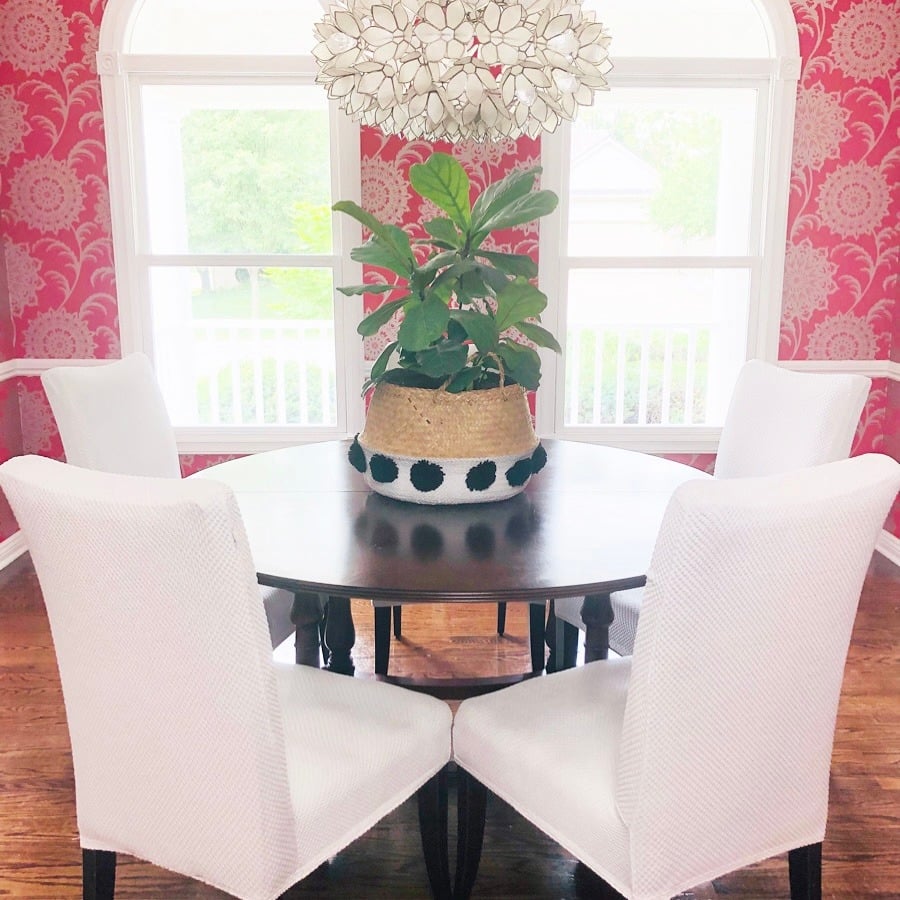
This blog contains affiliate links. This means a small commission is earned if you make a purchase by using this link. The price you pay will be the same whether you use the affiliate link or go directly to the vendor’s website using a non-affiliate link.
Plants have my heart these days.
Because it is hotter than Hades outside and indoor plants will continue to thrive in our temperature-controlled house!
This was my first “real” plant.
I ordered this fiddle leaf fig plant two years ago when the pandemic started.
I think I was looking for a new hobby and hoping that I had a bit of a green thumb.
Making sourdough bread didn’t stick but growing plants did!
I even expanded into other varieties with new plants and figured out the easiest plants to grow.
Maybe, since plants are now one of my top decor items in the kitchen, it compensates for my poor sourdough baking skills!
Oh, how I love when a new bud emerges!
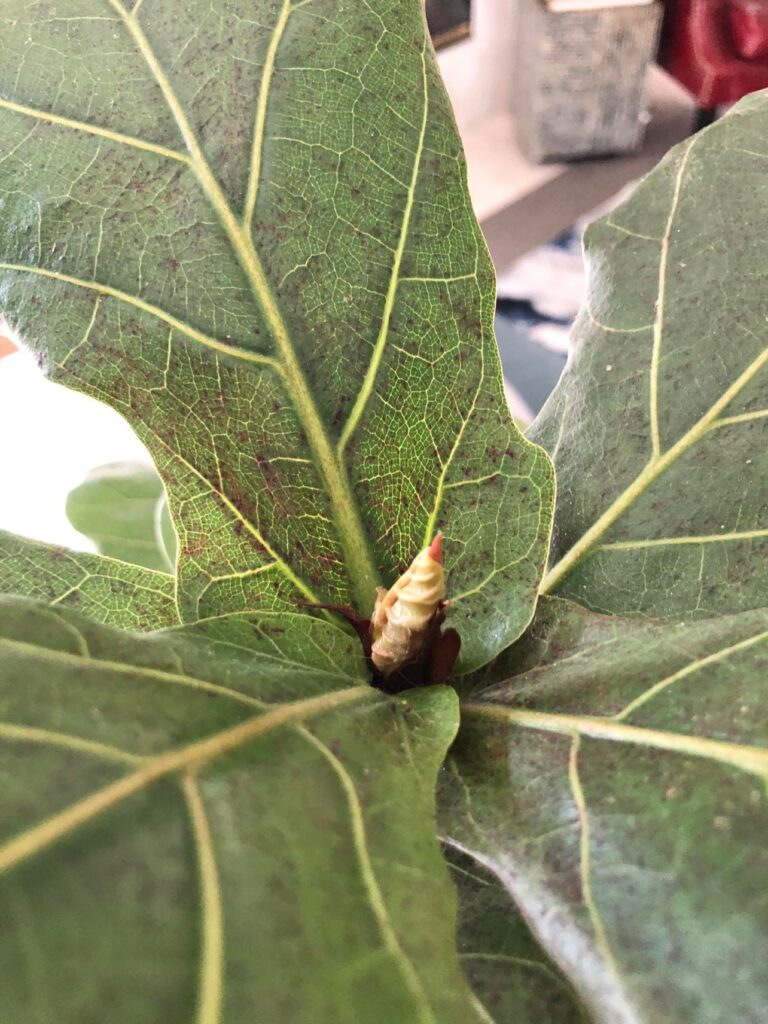
This plant has grown…and grown…and grown!
And is in need of a new environment in a new pot.
How to Know When to Repot?
For the indoor gardener, there are few things more frustrating than a plant that has outgrown its pot. You water and fertilize it dutifully, but it just keeps getting taller and leggier, constantly threatening to topple over.
Finally, you’ve reached your breaking point and you know it’s time to transplant your beloved fiddleleaf fig (or another plant) into a bigger pot with fresh soil.
But how can you be sure? (I know the struggle. Sometimes I resist a larger pant size for myself!)
Here are a few telltale signs that it’s time to give your plants some extra room to grow with bigger pots.
- The roots are visible at the surface of the soil or coming out of the drainage holes. Root-bound plants aren’t able to get the nutrients or as much water as they need to thrive.
- The plant is top-heavy and seems unstable in its pot.
- There are dead leaves or the leaves are yellow or droopy, indicating that the plant is not getting enough water.
- There is little or no new growth.
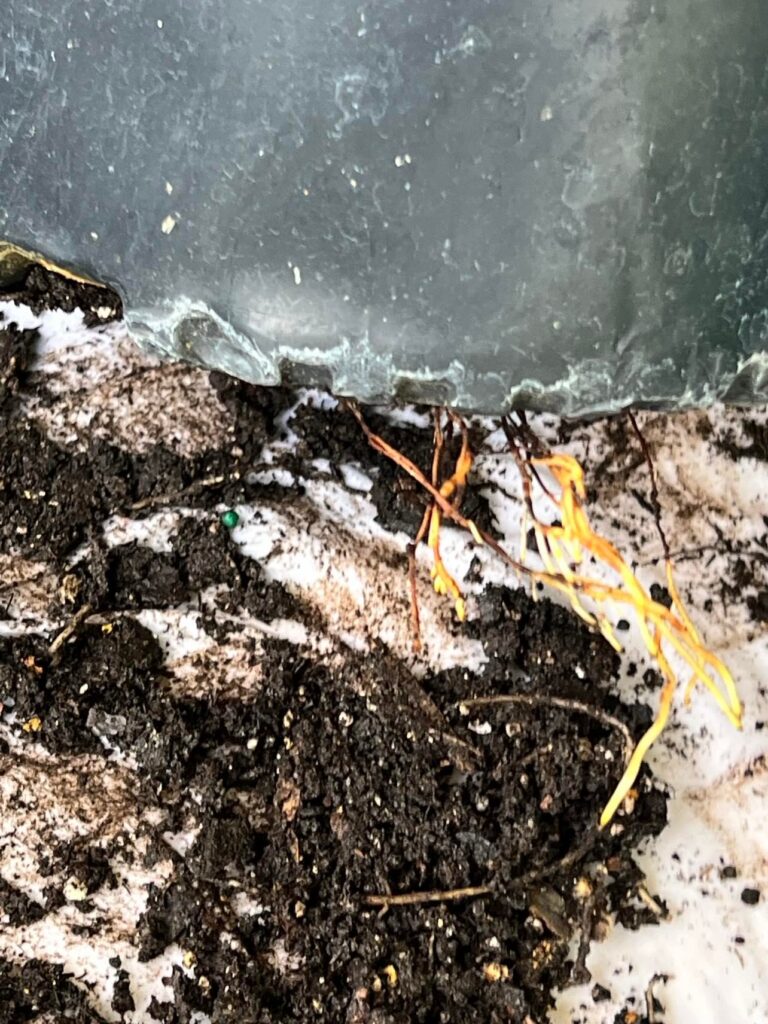
As a general rule, if you see any of these signs, it’s time to repot your plants into a larger container. With a little extra room to spread out, they’ll soon be looking better than ever.
Begin by choosing a new pot that is about 2-3 inches wider than the current pot. Select a pot with drainage holes to help prevent root rot.
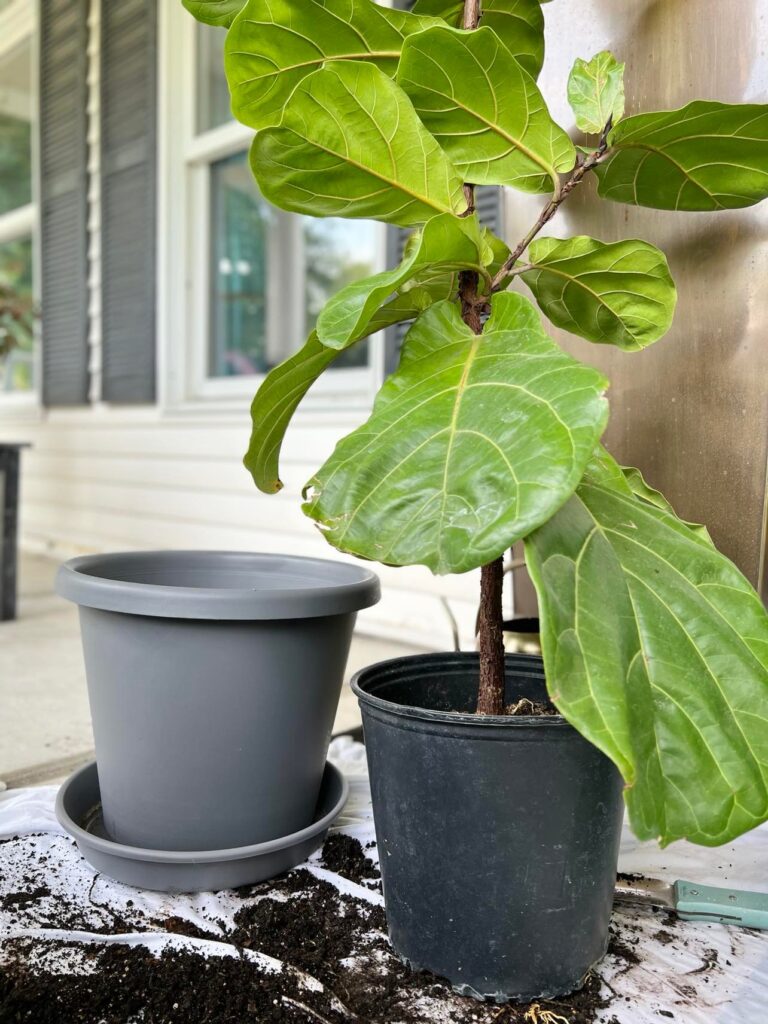
What Tools Do I Need to Re-pot?
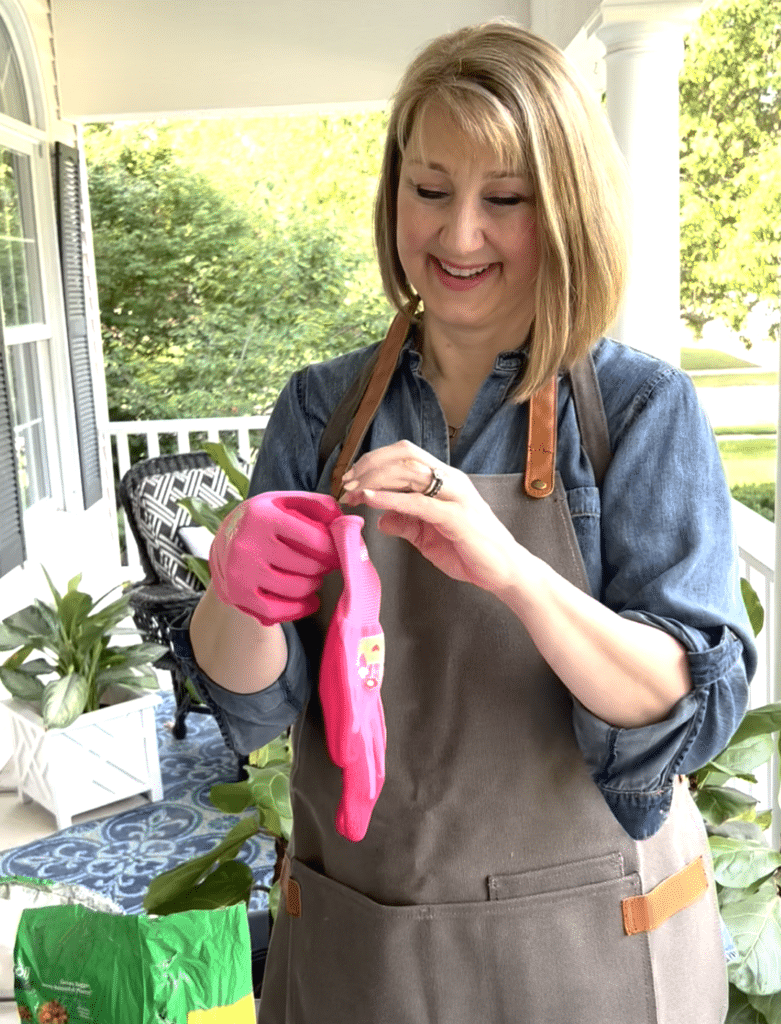
Here are a few tools that are very helpful when transplanting plants.
- Larger pot: The pot size is important. Choose a pot that is one size larger than the current one to provide ample space for root growth.
- Potting soil: Use high-quality potting soil that is suitable for the specific type of plant you are transplanting. Your transplant will love the new soil!
- Trowel or hand shovel: These tools will help you remove the plant from its current pot and transfer it to the new one.
- Watering can or a sprayer: Have a watering can or sprayer ready to hydrate the plant after transplanting.
- Drainage material: Place rocks, pebbles, or broken pottery pieces at the bottom of the pot to enhance drainage.
- Plant food or fertilizer: Consider adding a slow-release or liquid plant food to provide nutrients for the transplanted plant.
- Gloves: Wearing gloves can protect your hands from dirt, potential irritants, and thorns.
- Pruning shears: If the plant has overgrown or damaged roots, you may need to trim them with pruning shears before transplanting.
- Labels: Use labels or tags to identify a specific plant in case you have multiple varieties.
- Water: Keep a water source nearby to moisten the soil during and after the transplanting process.
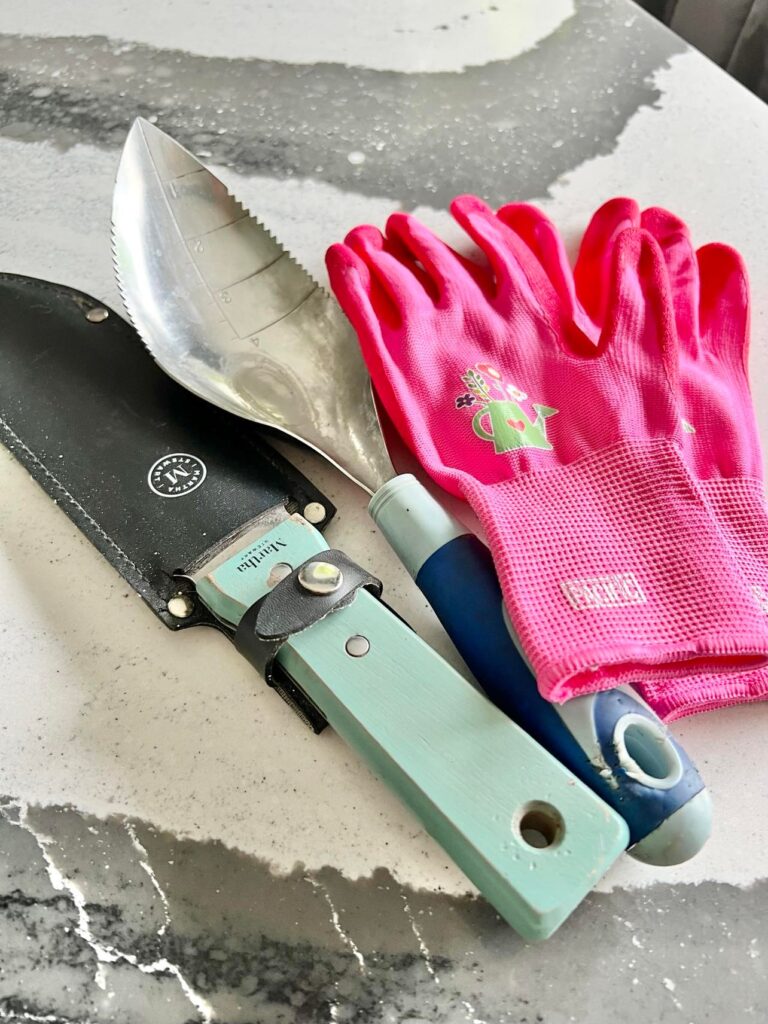
For the indoor gardener, plants are like pets – they need food, water, and a little attention to thrive. But unlike animals, plants can outgrow their homes, becoming cramped and stunted in their pots. When this happens, it’s time to transplant them into a larger space.
Bentley actually has outgrown his bed…three times!
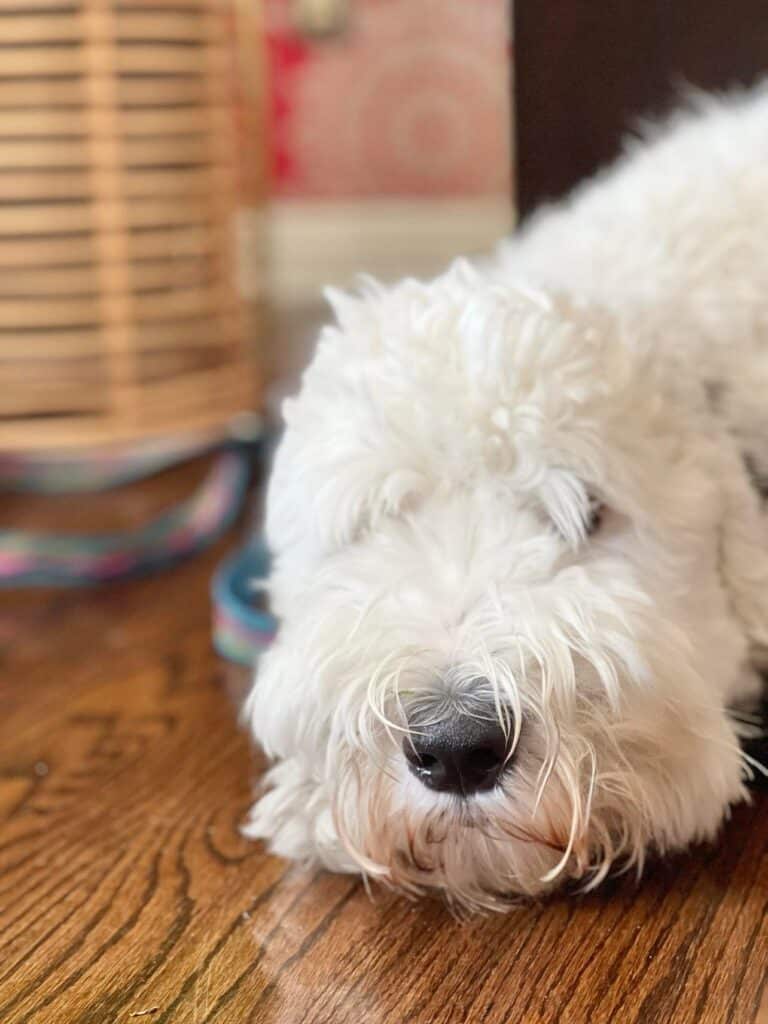
What is the Best Way to Transplant a Plant?
Here is your step-by-step guide for how to transplant plants without killing them.
The first step is to gently remove the whole plant from its current pot. If you have trouble with the plant coming out of the old pot, it is a good idea to place the pot and plant on its side and press down on the pot. This will help to loosen the plant and keep the plant’s roots intact.
Next, loosen the roots of the plant. If the plant is really root-bound, you can use a knife to cut off the bottom of the soil ball. (This is where my cool Hori knife comes in!) Additionally, loosen the soil on the sides of the root ball.
If you are working with larger plants, lay the plant on a plastic bag to minimize soil loss and mess.
Place the plant in the new pot and fill in around it with fresh potting mix. Press the soil down around the base of the plant to ensure that there are no air pockets in the soil.
Water well and allow the plant to drain before putting the new planter back in its original spot or new location.
With a little care, your plants will continue to thrive – and you’ll have the satisfaction of knowing you gave them a little extra room to grow.
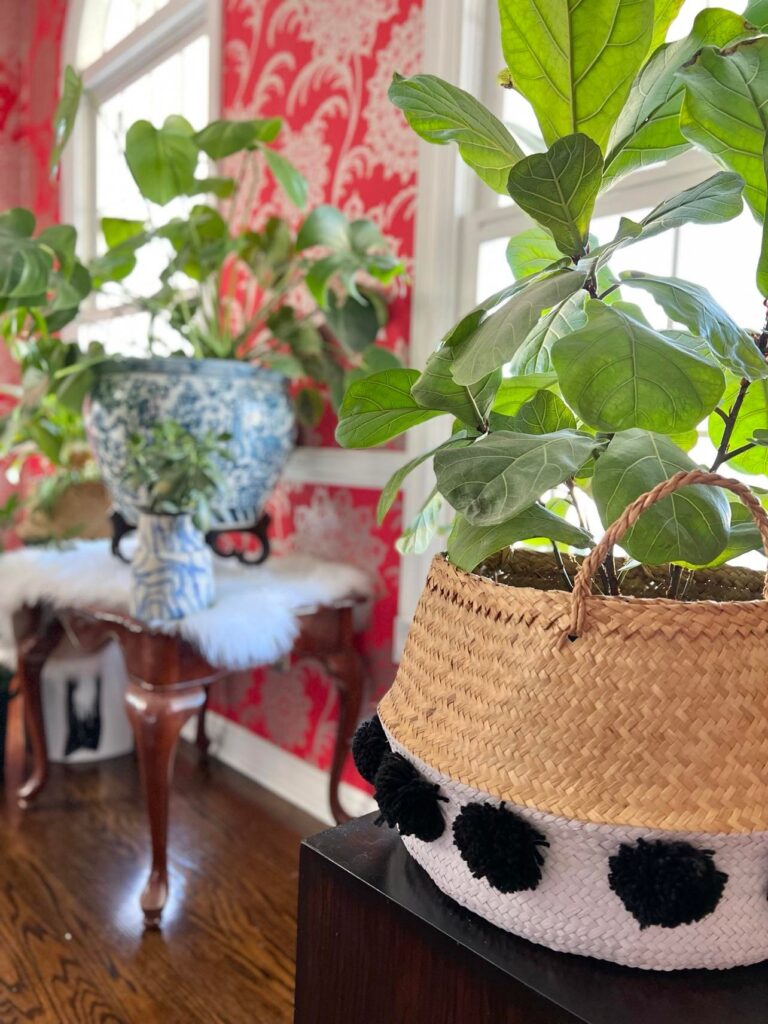
Should you water plants before transplanting?
The day prior to transplanting, ensure your plant receives a thorough watering. Place them in a tray of water or the bottom of the sink and allow it to soak up water for about an hour.
This pre-transplant hydration helps prepare the plants for the upcoming move and ensures they have sufficient moisture.
Do Plants Go Into Shock When You Transplant Them?
For many indoor plants, the repotting process is a shock to the system. After all, they’ve spent their whole lives in one pot and suddenly they’re being moved to a new home.
Some plants may go into a form of transplant shock and take a while to adjust to their new surroundings. But how long does this period of shock last?
For plants like fiddleleaf figs, it can take days or several weeks for them to recover from being transplanted. During this time, the plant may lose some leaves and look a bit wilted.
For the first week after transplanting, simple steps like keeping the soil moist and ensuring adequate light will help your plants bounce back and be better than ever.
So if you’re thinking of repotting your plants, don’t be discouraged if they go into a bit of shock afterward. With a little patience, they’ll be back to their old selves in no time.
How Often Do You Water Plants After Transplanting Them?
Generally, it’s recommended to water newly transplanted plants more frequently than usual, keeping the soil consistently moist but not waterlogged. It’s essential to monitor the moisture levels and adjust watering accordingly.
Regularly check the soil moisture by inserting your finger into the soil, and if it feels dry about an inch below the surface, it’s time to water. Remember, providing adequate hydration during the initial stages after transplanting helps plants establish their root systems and thrive in their new environment.
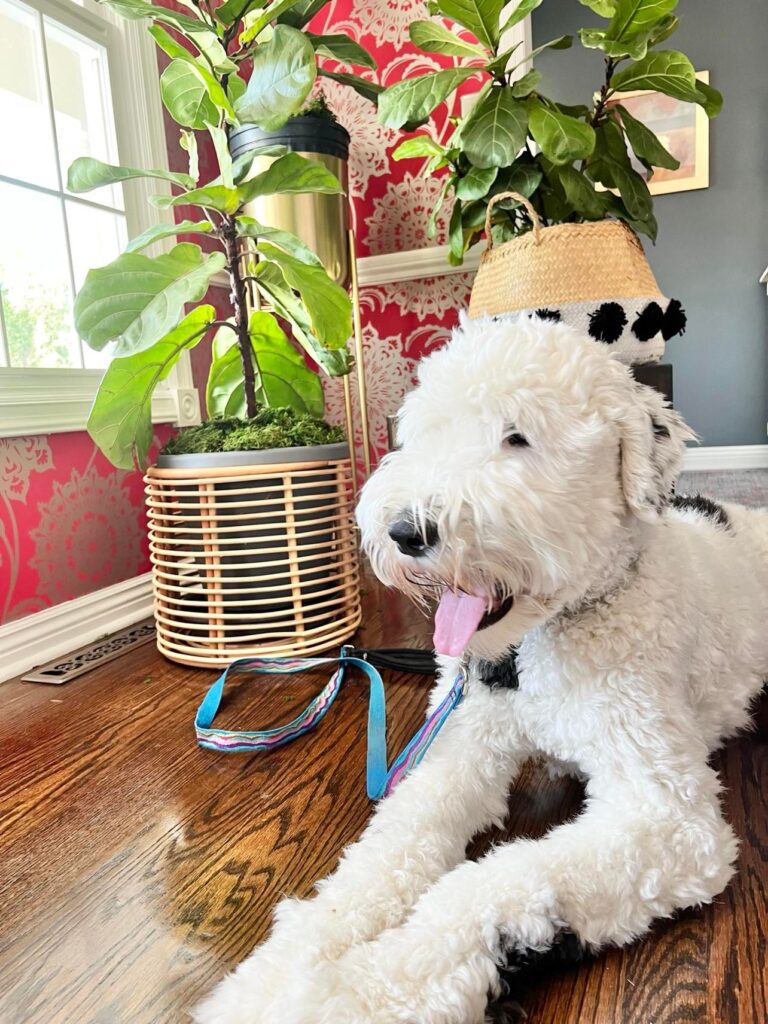
You successfully transplanted your plant into a more spacious pot.
No plant casualties here…you now know how to transplant plants without killing them! Now, take a moment to bask in the glory of your accomplishment!
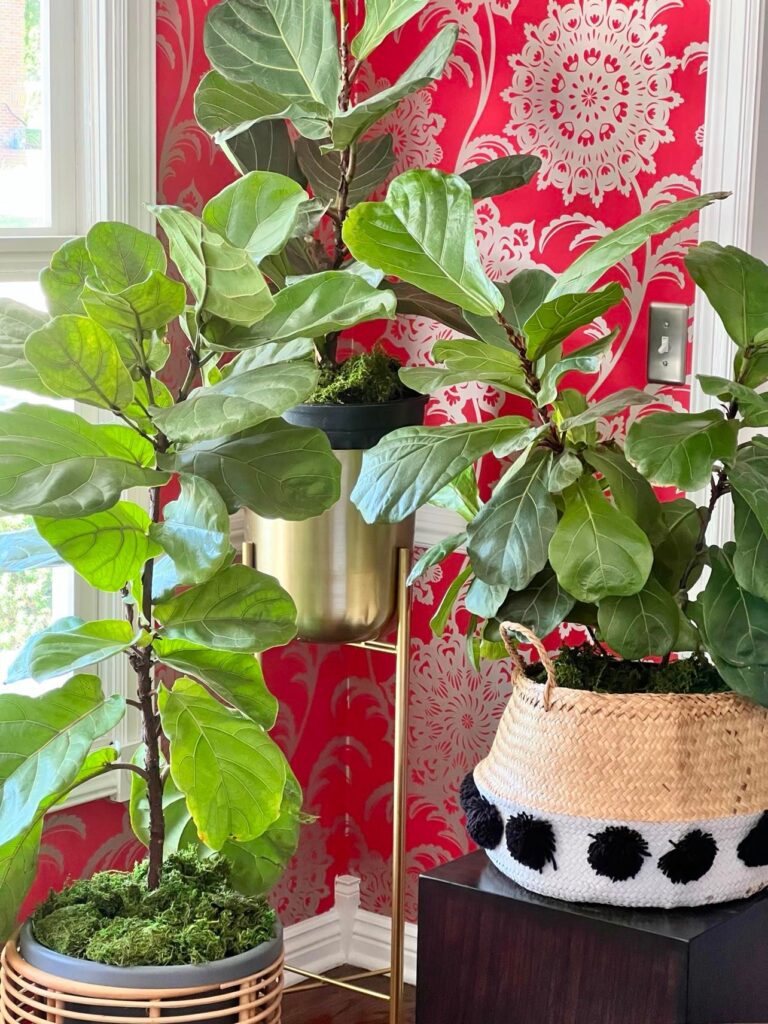
But don’t stop there – put your newfound skills to work and transplant some other plants into larger pots. Your home is going to be flourishing with all your gorgeous plants!
Cheers!

Don’t Forget to Pin It!
Pin the image below to your boards on Pinterest (just click the Pin button in the top left corner). You can also follow along with me on Pinterest!
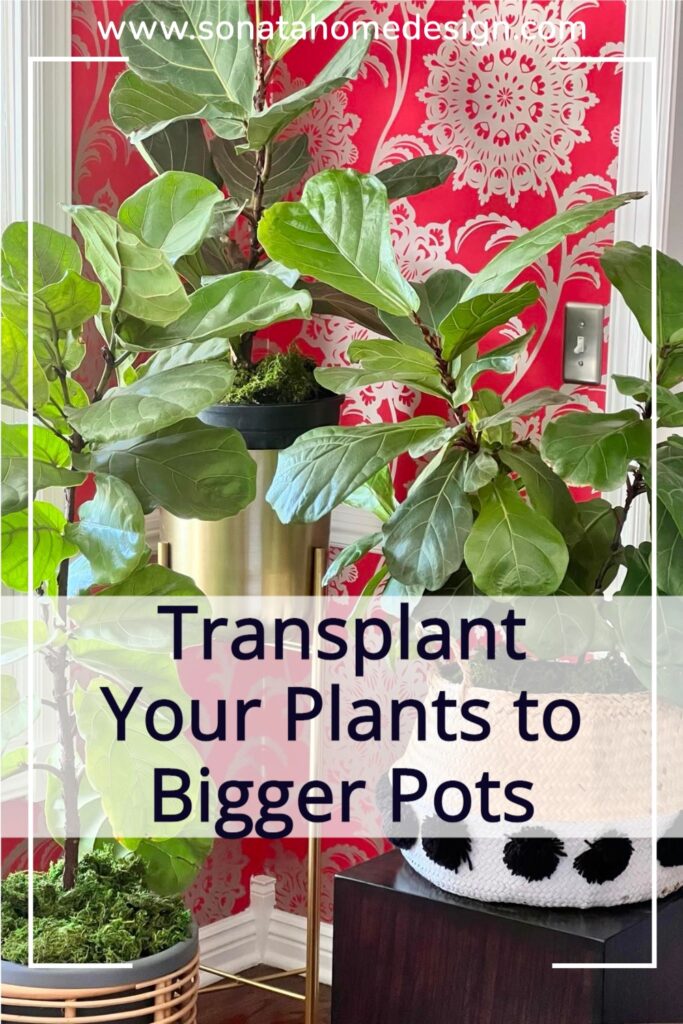
More Green Thumb Posts
The 5 Best Easy-Care Indoor Plants
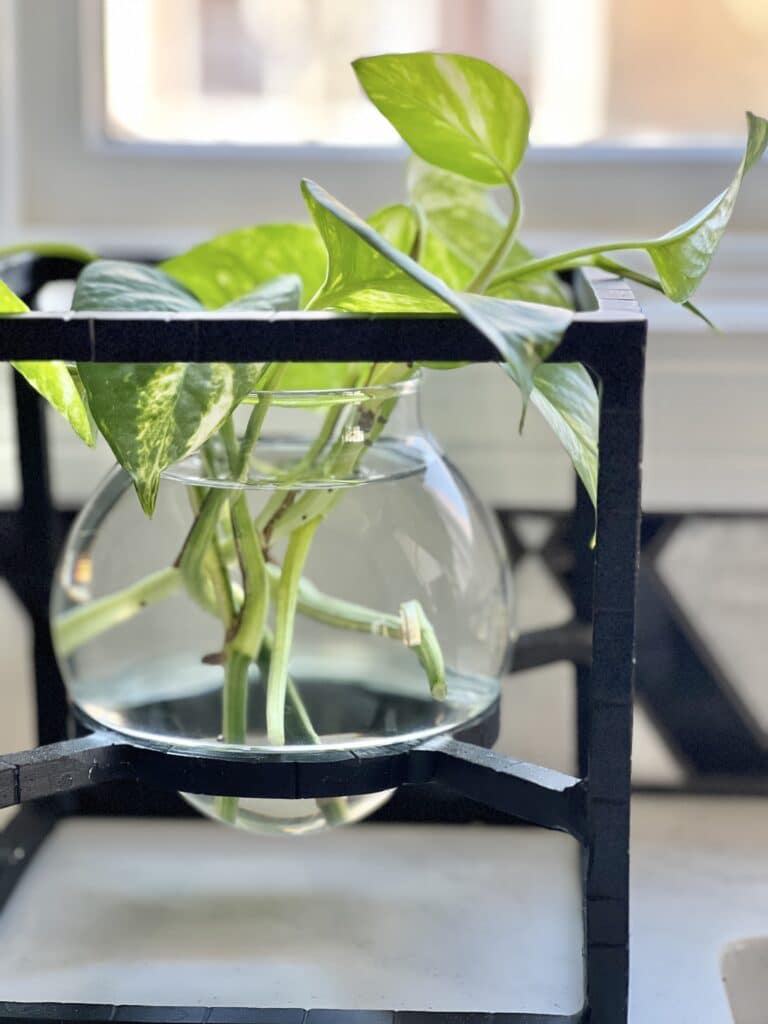
Transform a Dog Bowl Into a Beautiful Planter
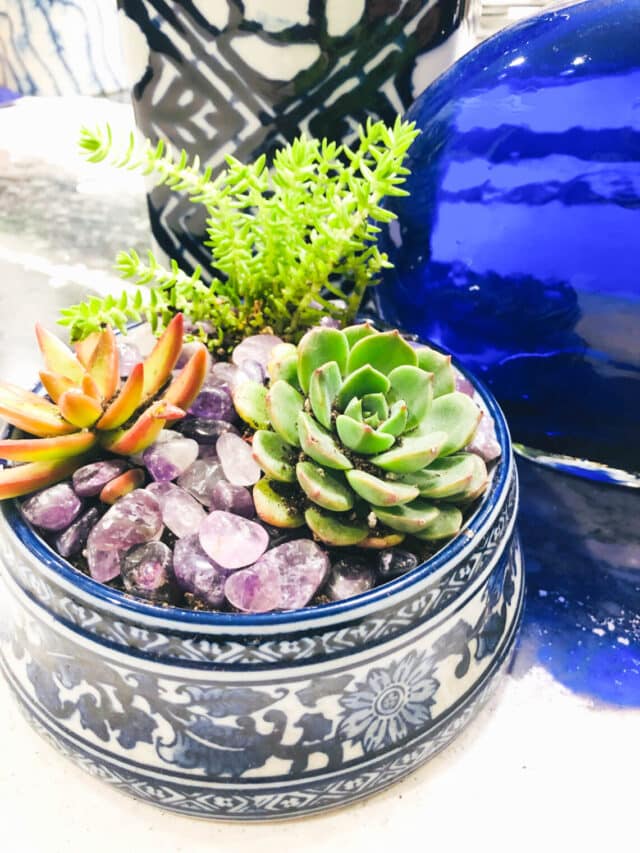
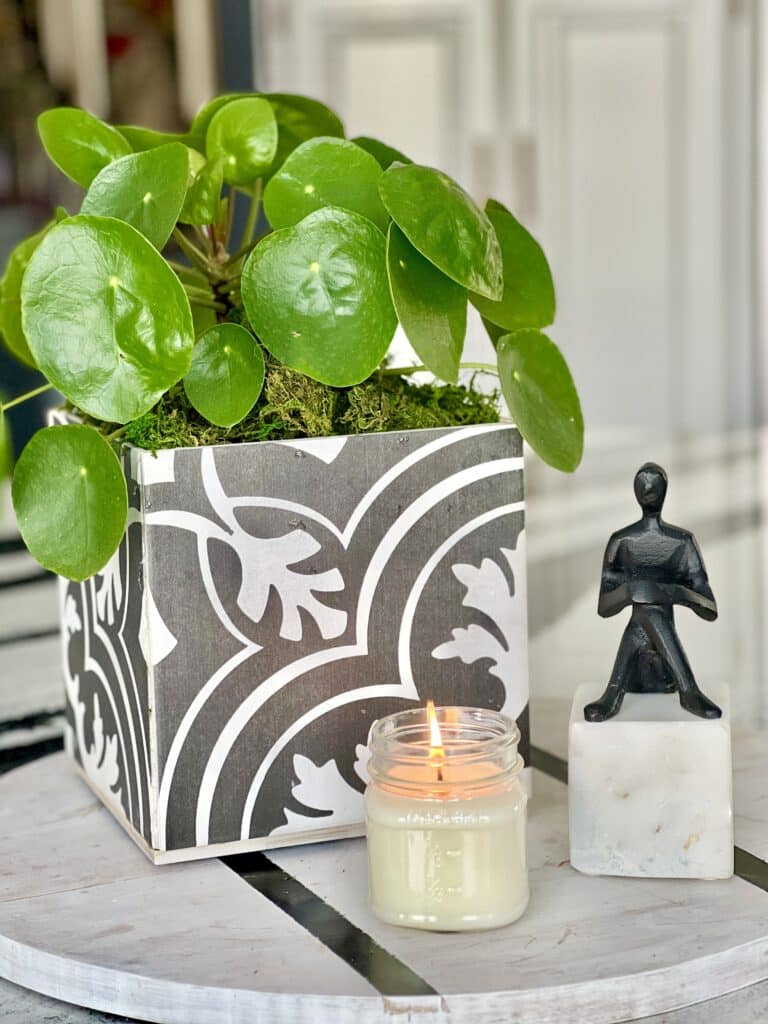


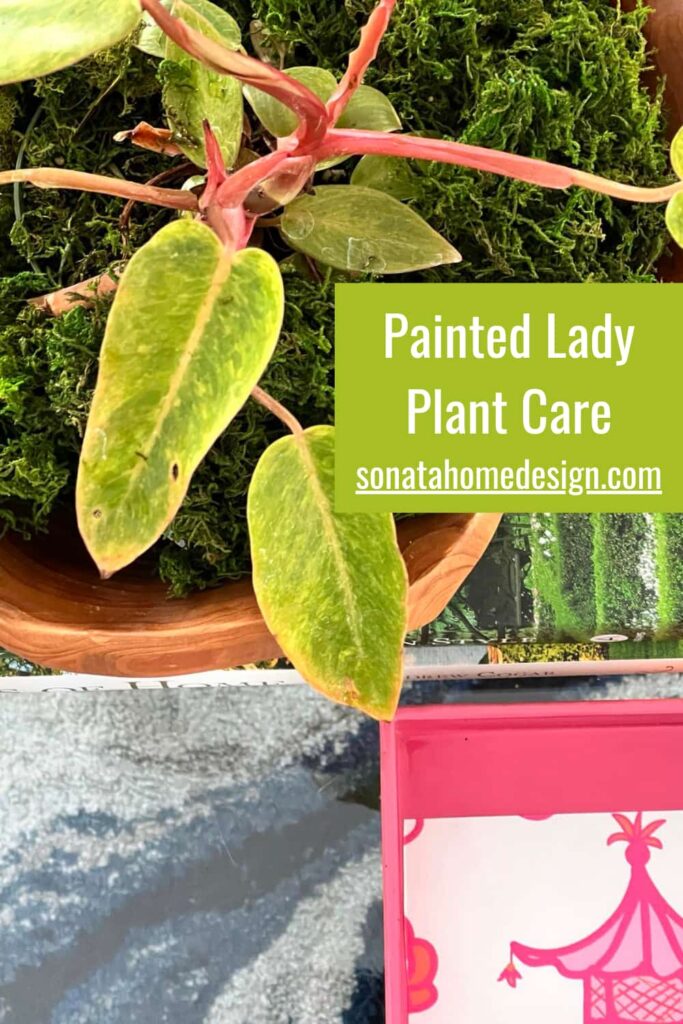

I loved reading this helpful Post Missy!! I have several plants in our home that really need reporting and you’ve inspired me to get going! Susan
Thank you, Susan! It is such an easy thing to do, I always wonder why I put it off sometimes!
I have been following you for about a year and I want to be you when I grow up! So inovative and creative. You obviously love your home and your followers and it comes thru in the many ways you inspire all of us. Thank you for sharing.
Diane Pandolfi
Oh, Diane! Your words mean everything to me! I started blogging because I love to share ideas about my home. The incredible bonus has been the opportunity to connect with readers like you! Thank you so much for following, reading, commenting, and just being an amazing person! Thank you, Diane!!! ~Missy
It’s so funny Missy, as much as I love to garden outside, I don’t have a ton of plants inside. I am encouraged by your post and might try a few more. Thanks so much for all of the info.
Well, since you are my role model for outdoor gardening, I take this as the highest compliment! Thank you!
Oh, how I need to do this…several need new pots! Thanks for the inspiration!
Coming from Inspire Me Monday Link Party. Boy did I need this post! Thanks MIssy
Oh, I’m so glad, Regina! I’m enjoying getting back to Link Parties. So many great ideas! Thanks for stopping by!
Thanks for this! I recently began adding house plants (since it’s too hot to go outside and play in the garden), so this post is very timely.
A very informative post! I do pretty well with standard house plants and repotting them (though not my spider plant since I learned the hard way that those LOVE to be pot bound!) but have a harder time with more exotic varieties like orchids and succuluents.
Hi Joanne, I have never had a spider plant and did not know they love to be root bound! Thanks for the tip!